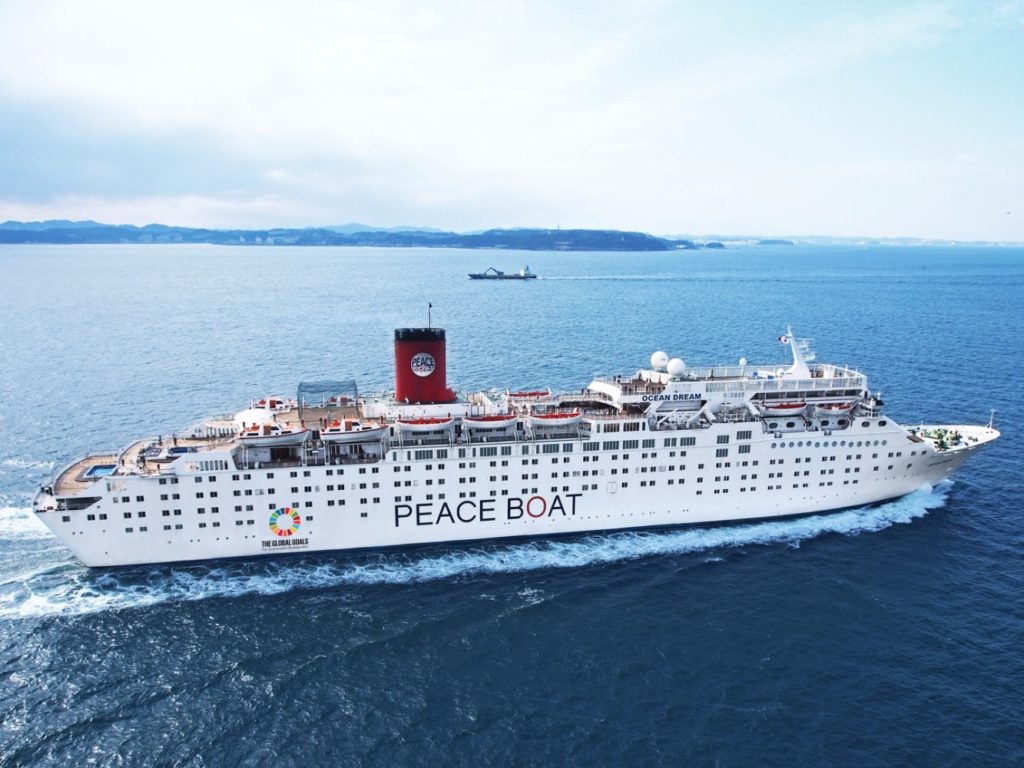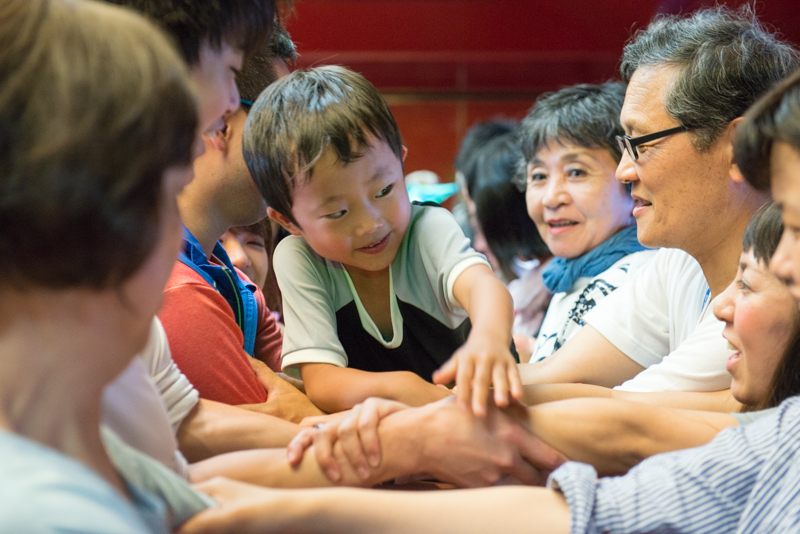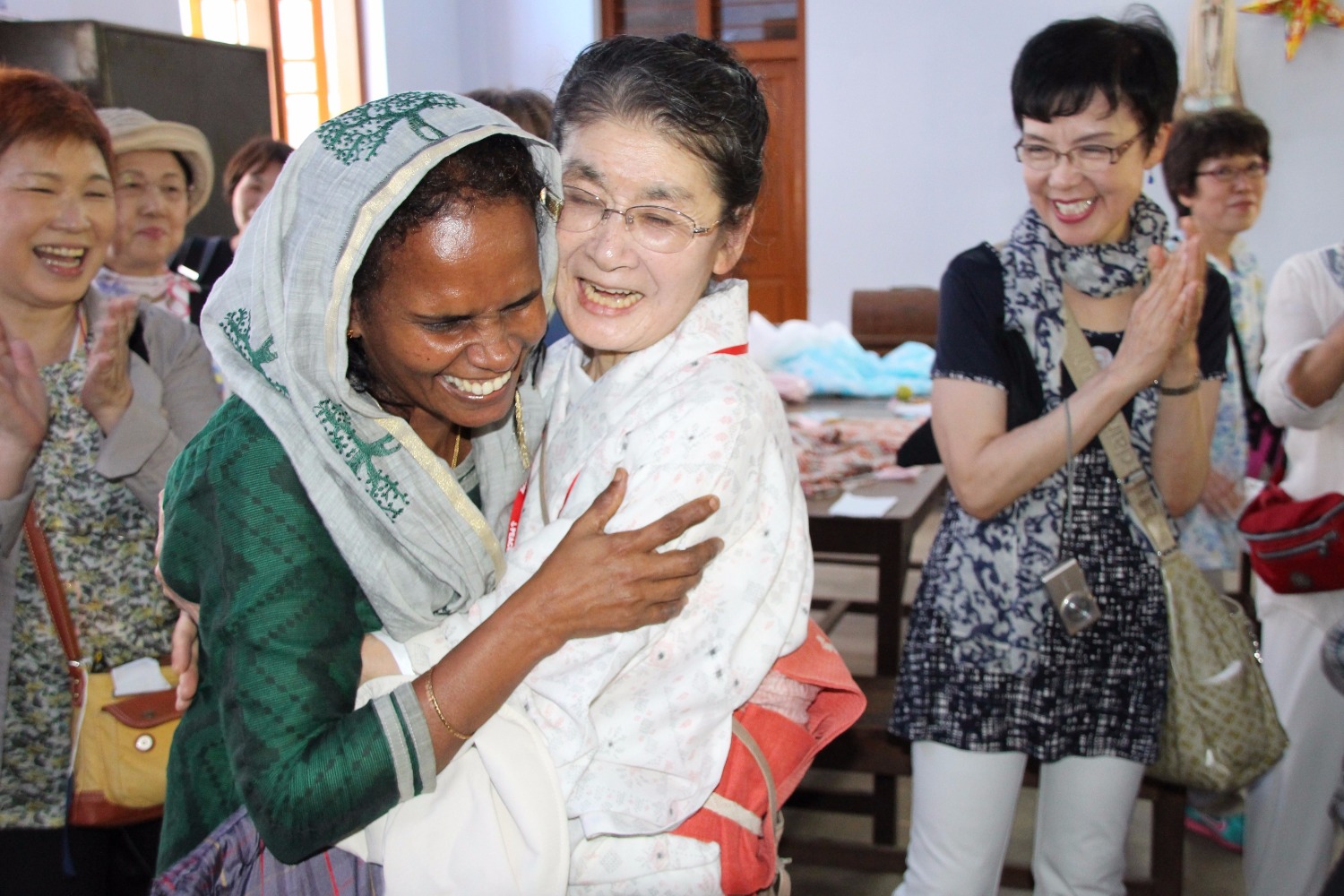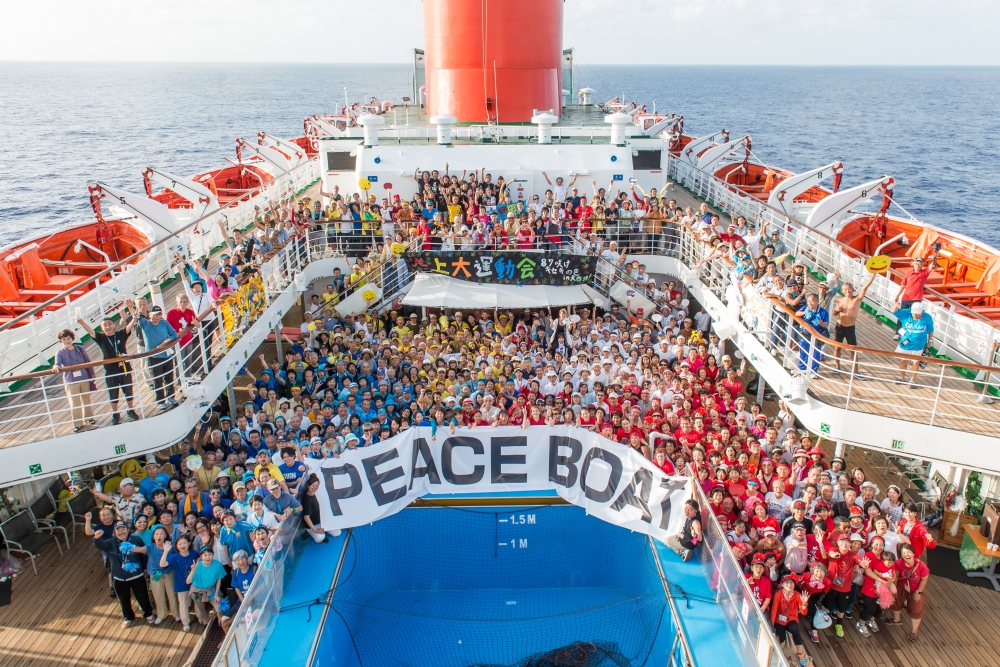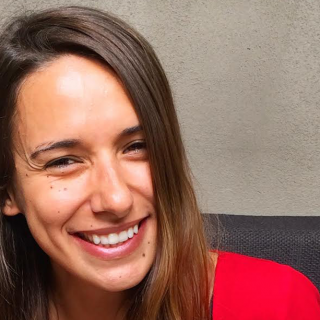Ecoship is a 250-meter long giant designed by the Japan-based NGO Peace Boat, with design and operation based on the concepts of nature. It is a fully sustainable cruise ship that could change the future of the shipping and cruise industries.
The hull is aerodynamic, its shape similar to that of a humpback whale. The coating, antifouling and non-toxic, resembles the skin of a fish. With 6,000 square meters of photovoltaic panels turning sunlight into energy, Ecoship is able to use solar power to supply 100 percent of the light in its passenger cabins and public outdoor areas. Ecoship also harnesses the power of the wind: ten sails provide some of the power needed to keep the ship moving while ten wind turbines supply up to 30 percent of the energy demand on board.
Ecoship’s engine is a hybrid, capable of being fueled by biofuel, such as methane. This feature curbs fuel consumption by 20 percent and reduces the ship’s carbon emissions by up to 40 percent, compared to a similar vessel using conventional technology.
Ecoship, which can hold 2,000 passengers, is expected to be ready to launch by 2020. It will be the first time that the most advanced energy technologies will be incorporated into such a large marine vessel (as opposed to small, experimental boats). This is a significant milestone, as Ecoship aims to establish a sustainable model in an industry that causes serious environmental damage.
THE FLAG OF CHANGE
The maritime industry is a major contributor to greenhouse gas emissions. While the transportation of passengers accounts for only a small share of these– commercial transport being the major culprit — a model tourist ship is a showy flag, which will increase public awareness, herald the possibility of solutions and raise standards in the industry.
Advancing sustainable development has been part of the Peace Boat’s mission since its founding more than three decades ago. In 2008, Yoshioka Tatsuya, co-founder and director of the organization, was nominated for the Nobel Peace Prize for his peace and sustainability initiatives.
The NGO charters large passenger vessels to make educational trips with themes such as human rights, peace and defense of the environment. Most passengers are from Japan, but Peace Boat hopes to expand its programs and engage people from all over the world.
So far, there have been more than 30 regional trips and 60 world cruises offering participants humanitarian encounters with locals wherever the ship docks. One Peace Boat delegation, for example, travelled to Kenya to learn about land degradation, desertification and loss of biodiversity.
- Life on board is led mainly in Japanese, since most of the participants come from Japan (Photo: Peace Boat)
- Kochi, in India, received a group of 25 Japanese who traveled for intercultural exchange, sharing food, songs and dances with the people of Kerala (Photo: Peace Boat)
- Peace Boat Disaster Relief Volunteer Center has sent more than 14,000 volunteers to help out with Japan’s earthquake and tsunami relief efforts (Photo: Peace Boat)
- Between 700 and 1,000 participants of varying ages and origins join every trip (Photo: Peace Boat)
One of the most touching initiatives is the Hibakusha project, centered on the survivors of Japan’s 1945 Hiroshima and Nagasaki bombings. They are invited by Peace Boat to join the cruise team and give testimony, drawing attention to the catastrophic consequences of using nuclear weapons.
One of these lecturers, Nobuo Miyake, recounted that he was two kilometers (1.24 miles) from the core of the bombing in Hiroshima and saw people moaning in pain. In his words, they did not look like human beings, as their skin peeled was peeled off or completely burned.
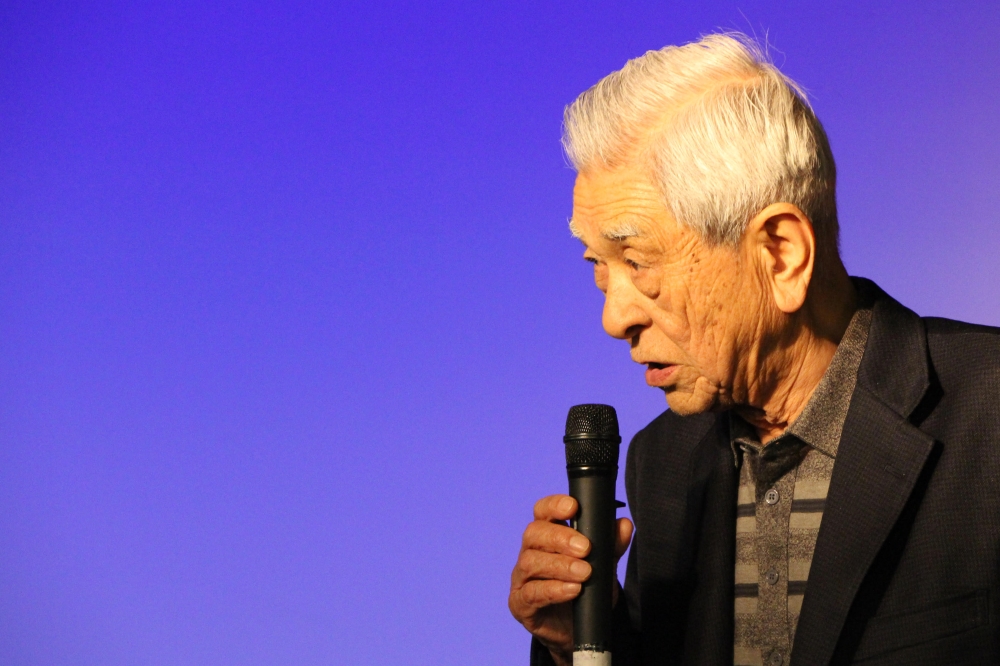
Nobuo Miyake, one of the Peace Boat lecturers. He was 16 when Hiroshima and Nagasaki were destroyed by the atomic bomb. Today, he gives testimony in the cause of peace (Photo: Peace Boat)
Peace Boat has the support of 70 members, which helps the group to carry out its many projects. Almost all of them joined the organization after taking a Peace Boat trip as a volunteer or a lecturer. “I translate the testimony of survivors of the atomic bomb to the audience of Latin American countries,” says Mexican Minoro Alejandro Gutierrez, 32, a volunteer translator of Spanish and Japanese for Peace Boat. “I’m a communication bridge between people and I feel happy about it.”
